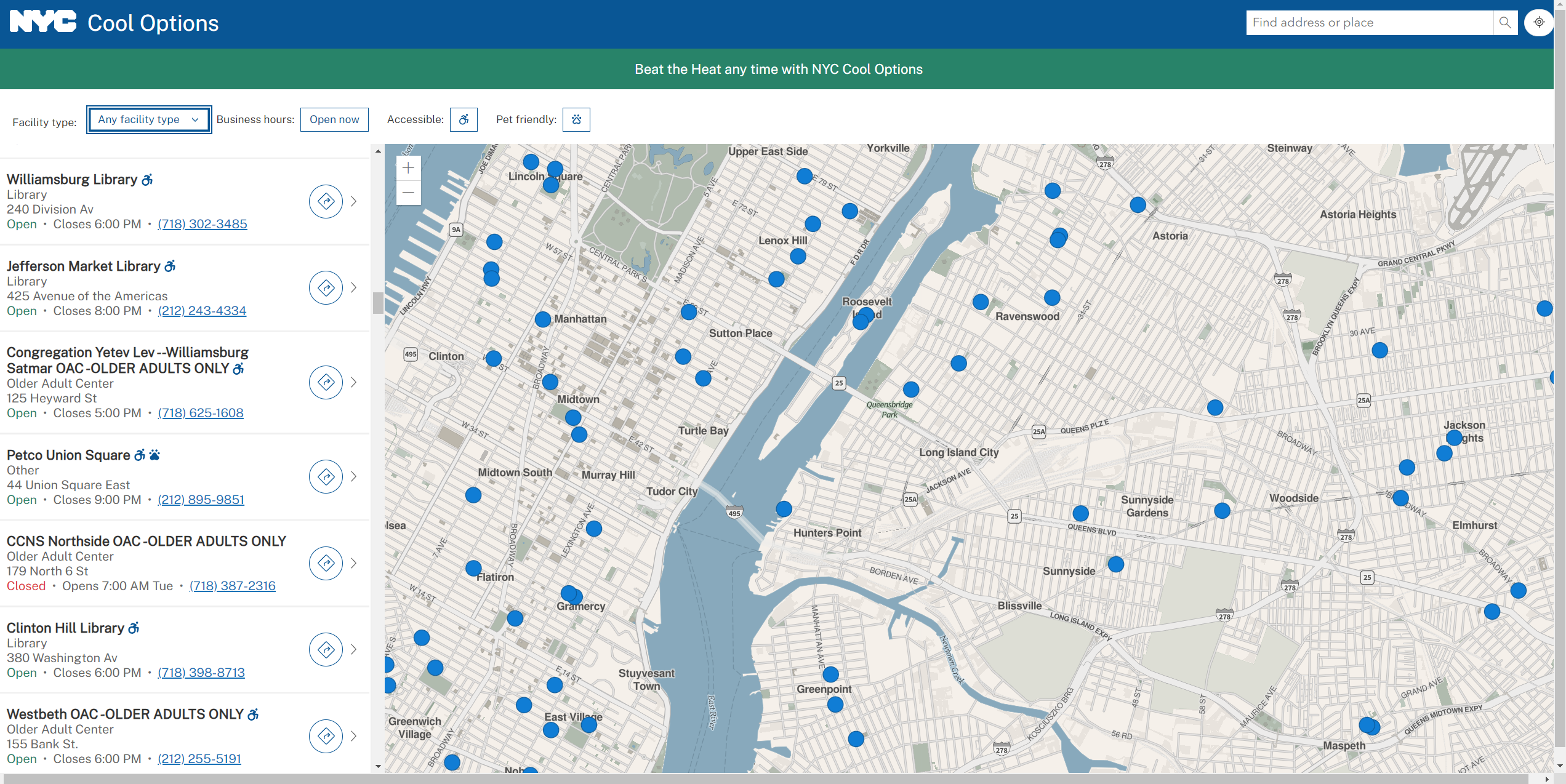HPD and NYCEM Launch “Beat the Heat” Campaign to Help New Yorkers Stay Cool, Safe, and Informed
July 25, 2025
Part of HPD’s “Stay Informed, Stay Connected NYC” campaign, the initiative delivers vital housing and safety information to help tenants stay cool during extreme summer heat.
New York, NY — As New York City experiences some of its hottest and most humid days in recent memory, with temperatures reaching the high 90s and heat index values climbing even higher, the NYC Department of Housing Preservation and Development (HPD), in partnership with NYC Emergency Management (NYCEM), are doubling down on efforts to protect tenants with “Beat the Heat,” a summer push under HPD’s broader Stay Informed, Stay Connected NYC campaign, providing New Yorkers with clear, accessible housing information and resources to stay safe.
HPD collaborated with NYCEM to provide targeted heat messaging to tenants, helping ensure that households receive timely, actionable information during periods of extreme heat. This joint effort reflects a shared commitment to reaching vulnerable New Yorkers where they are, especially those at greater risk due to age, disability, chronic illness, or lack of air conditioning.
“It’s no secret that our city, our nation, and the world are feeling the effects of a changing climate, and extreme heat is one of the most urgent and dangerous challenges we face. That's why HPD is working closely with NYC Emergency Management to build smarter, more sustainable ways to keep New Yorkers safe. From education campaigns like Stay Informed, Stay Connected NYC to emergency planning and cooling centers, we’re equipping New Yorkers with the tools they need to stay safe, because it takes all of us, working together, to beat the heat,” said Acting HPD Commissioner, Ahmed Tigani.
“This initiative reflects the kind of coordination that makes our city’s emergency response stronger,” said NYC Emergency Management First Deputy Commissioner Christina Farrell. “Extreme heat is one of the deadliest weather hazards we face, and reaching people before it becomes a crisis is essential. By aligning tenant outreach with targeted heat safety messaging, HPD is helping expand our reach to households that may be at higher risk. It’s a practical, high-impact example of what city agencies can do when we work together with urgency, focus, and a shared commitment to protecting public health.”
“During a summer with record breaking temperatures, I'm grateful to see HPD and NYCEM expanding efforts to protect vulnerable New Yorkers,” said Council Member Lincoln Restler. “As the climate crisis continues to worsen, it's critical that we make smart interventions to ensure New Yorkers are prepared and safe in prolonged heat waves.”
Extreme heat is more than just uncomfortable; it can kill. That’s why heat is considered a weather emergency, with more than 500 New Yorkers dying from heat-related causes each year, making it deadlier than some hurricanes, floods, or winter storms. Vulnerable New Yorkers, including older adults, people with chronic illnesses or disabilities, and those without access to air conditioning, face the greatest risk. Additionally, most heat-related deaths occur indoors, typically in people's own homes without air conditioning, due to prolonged exposure to heat. These tragedies disproportionately impact communities already burdened by health and housing inequities, underscoring the urgent need for outreach, resources, and support.
New Yorkers are urged to listen to their bodies and watch for signs of heat-related illness. Heat stroke is a life-threatening emergency that occurs when the body overheats and can no longer cool itself down. When this happens, body temperature can rise to 106°F or higher within 10 to 15 minutes. Seek immediate medical attention or call 911 if you or someone you know has a high body temperature (103°F or above), hot, red, dry skin or cold, clammy skin, confusion or slurred speech, a fast or irregular heartbeat, headache, nausea, difficulty breathing, weakness, dizziness, or loss of consciousness.
Here’s How You Can “Beat the Heat”
- Air conditioning is the best way to stay safe. Run your AC at 78F or at the lowest comfortable temperature.
- Drink water frequently — even if you’re not thirsty.
- Wear lightweight, breathable clothing.
- Stay indoors in air-conditioned spaces whenever possible.
- Take cool (not cold) showers or baths to lower your body temperature.
- Block out sunlight indoors with curtains or shades.
- Take frequent breaks in the shade or in air-conditioned environments.
- Eat water-rich foods like fruits and vegetables to stay hydrated.
As part of this campaign, HPD inspectors will also be distributing vital cooling information directly to tenants, ensuring that New Yorkers feel equipped with the knowledge and resources they need to stay safe, cool, and informed this summer.
If you don’t have air conditioning, the city recommends accessing a Cool Option—any place with air conditioning where you can safely spend time during the hottest parts of the day. This includes the home of a friend or family member, or a local business such as a coffee shop, mall, or movie theater. Public spaces like libraries, senior centers, and museums are also excellent cool options. During extreme heat emergencies, NYC Cooling Centers are activated across all five boroughs. These free, air-conditioned public spaces are open to everyone. To find the nearest location, call 311 or visit the Cool Options map at nyc.gov/beattheheat, available in multiple languages.
#





